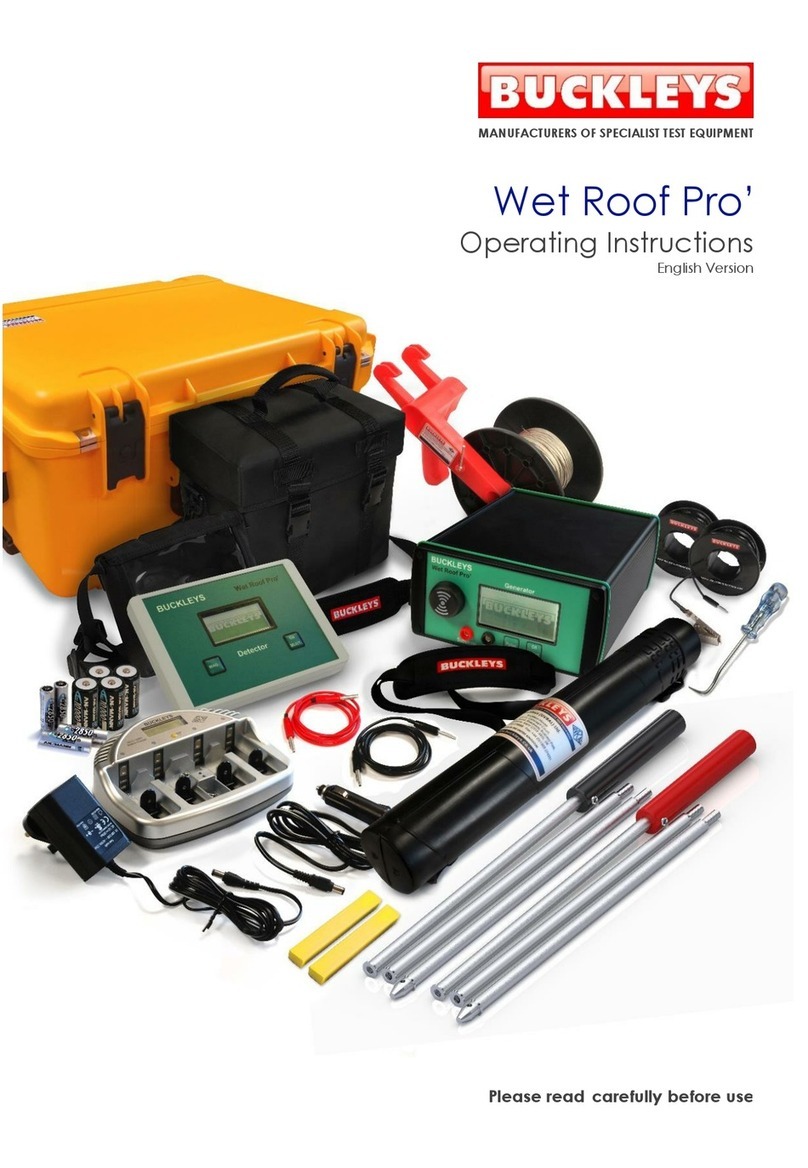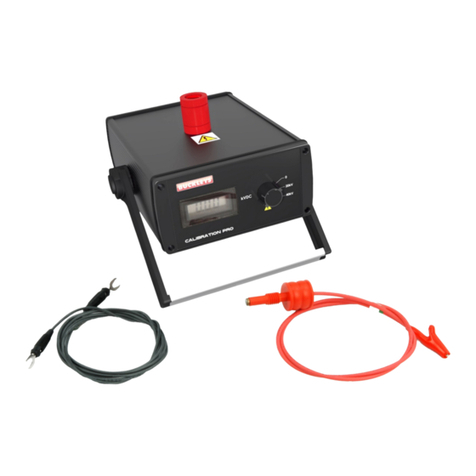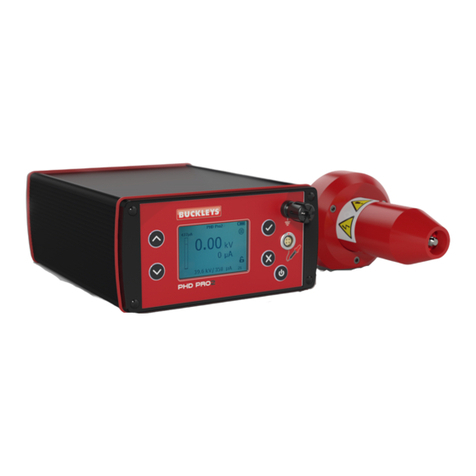Safety precations
All high voltage testing equipment of this type should only be operated
by authorised personnel who have read and understood the instructions
contained in this manual.
The operator should enjoy good health and in particular, not suffer from a
cardiac condition. When the unit is working the operator may experience a
mild shock or ‘zap’ when touching an earthed metal object. This is because
it is possible to build up a static charge in the operator’s body from the
field around the test electrode. The wearing of conductive boots or shoes is
recommended to help to overcome this problem.
The output test voltage of this equipment is derived from a high impedance
source and will collapse under short circuit conditions (See output graphs
- section 9). However, when the equipment is in use, should the operator
accidentally make contact with the test electrode, he will receive an
electric shock. Whilst not in itself hazardous, the involuntary reaction
to an unexpected electrical shock may cause a related accident i.e.
stepping backwards into an adjacent piece of moving machinery. In these
circumstances it is recommended that a guard be placed between the
operator and the test electrode and connected to the unit to turn off the
high voltage when it is opened. Rubber or plastic insulating gloves could be
worn as an alternative.
DANGER: Do not use test equipment of this type in any
combustible atmosphere as the test voltage will cause
an arc or spark, and an explosion could result. Therefore
the plant or site Safety Officer should be consulted before
proceeding with the test.
We cannot stress too strongly that equipment of this type should be operated
only with a secure connection to earth or ground. This applies especially
to the testing of plant or test pieces which do not have a permanent
connection to ground. Failure to comply with this procedure may cause
shock to the operator when adjusting controls whilst the equipment is
switched on.































